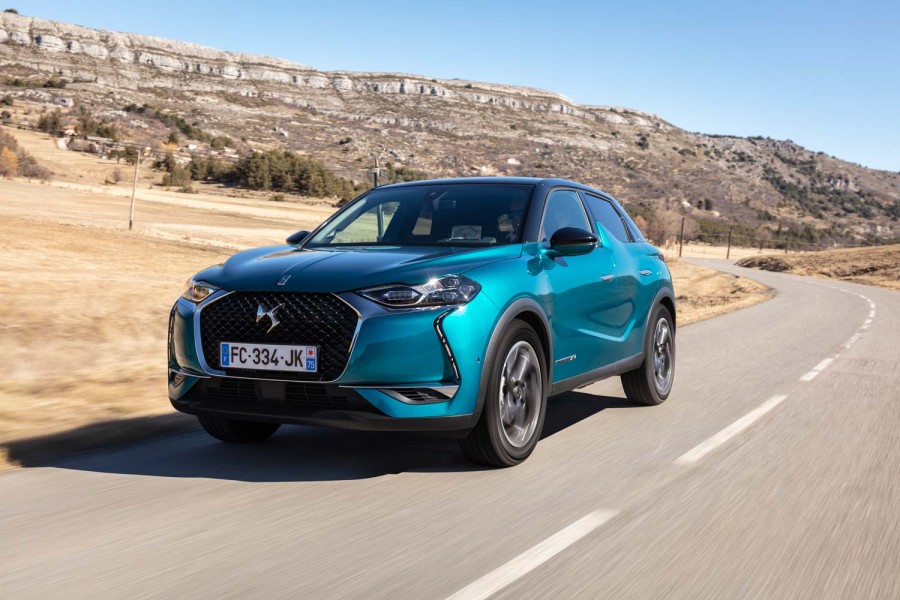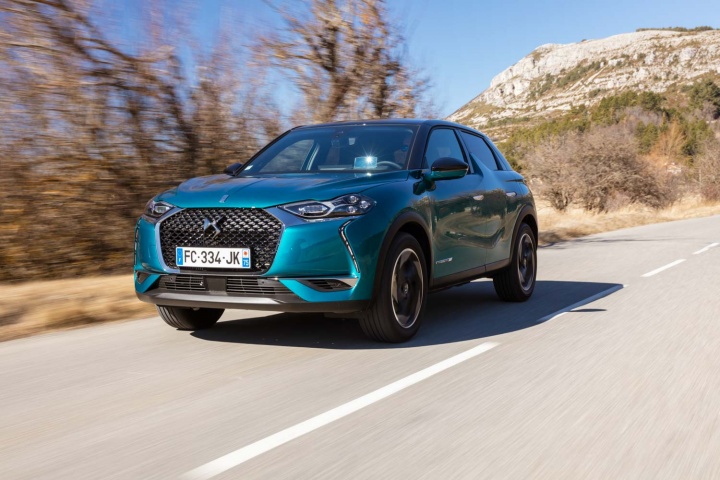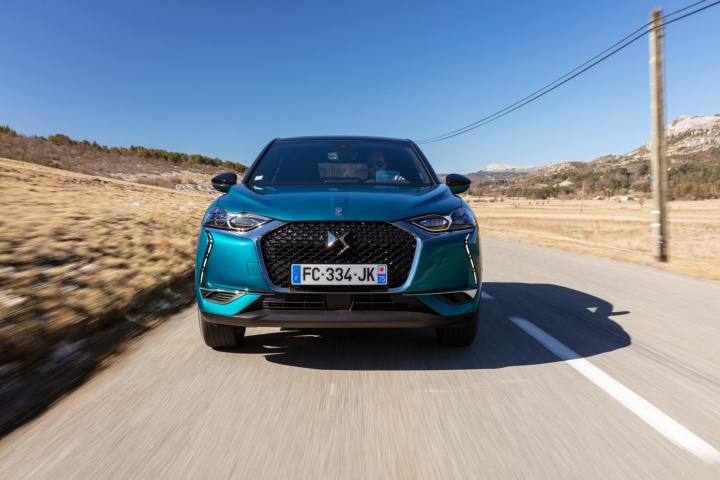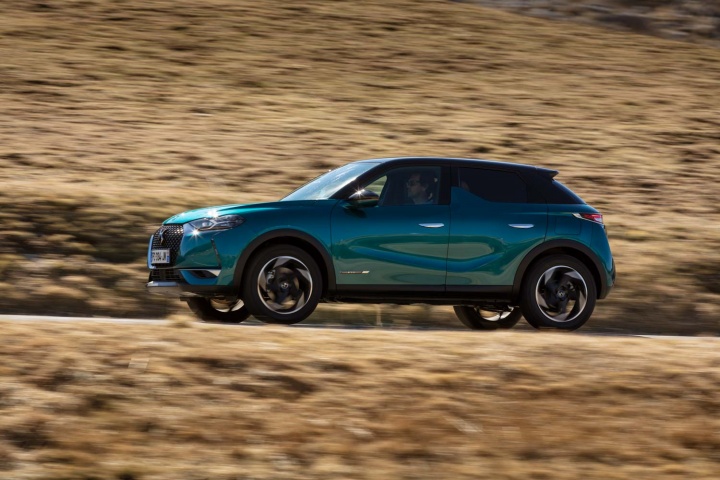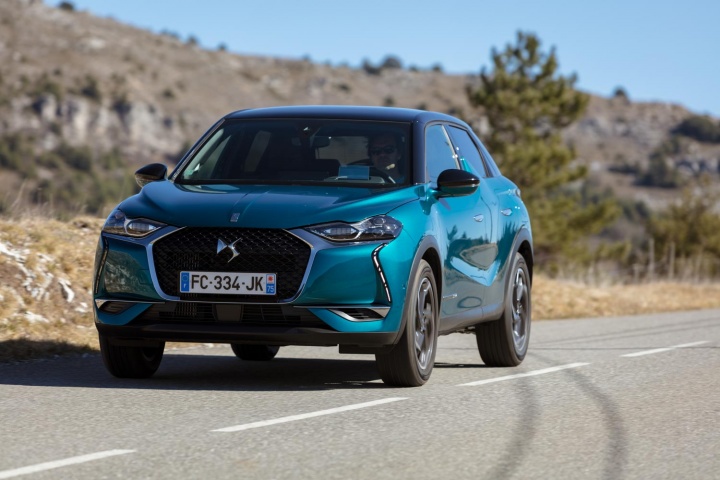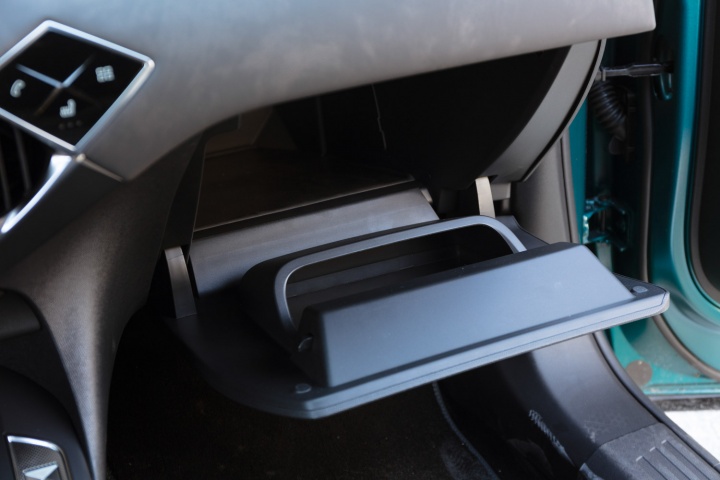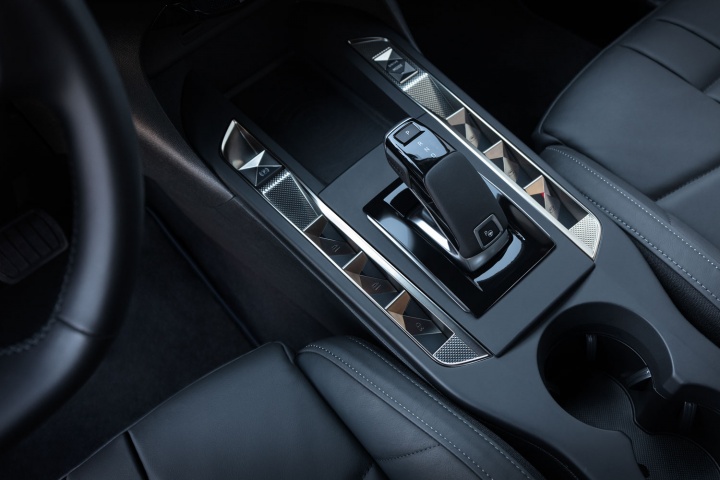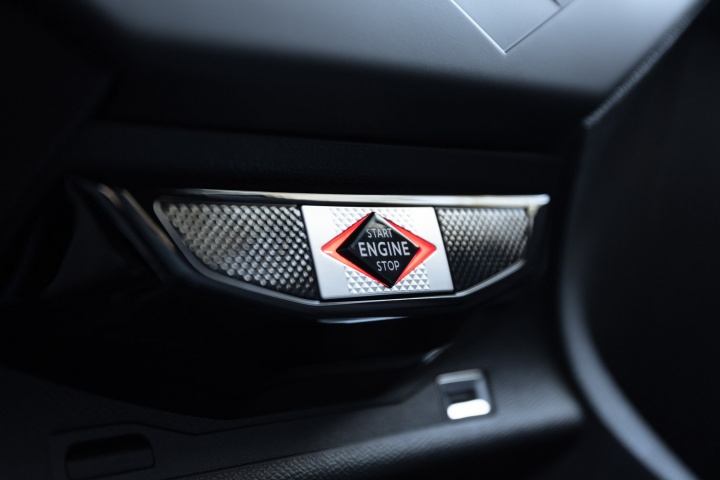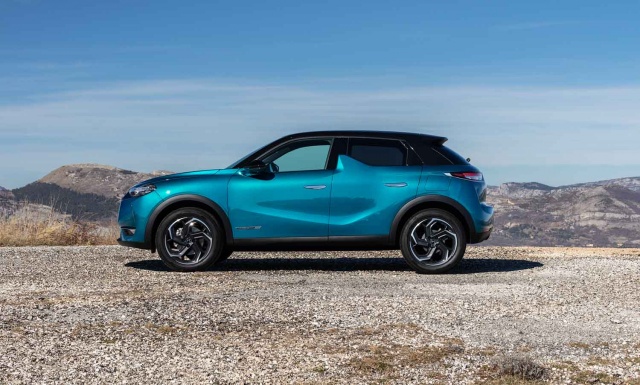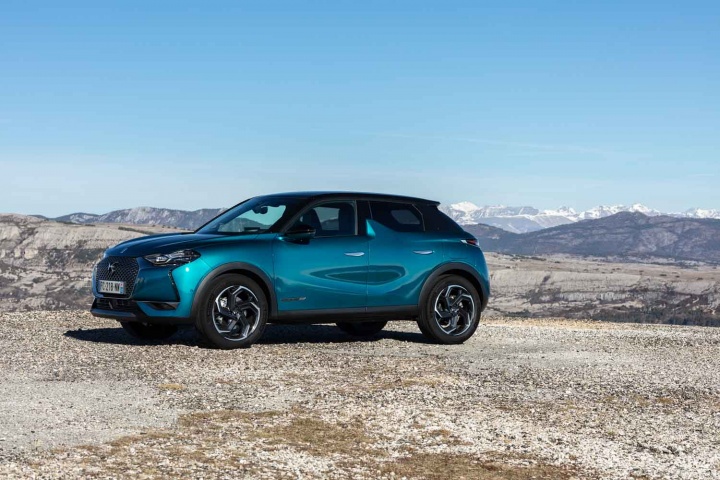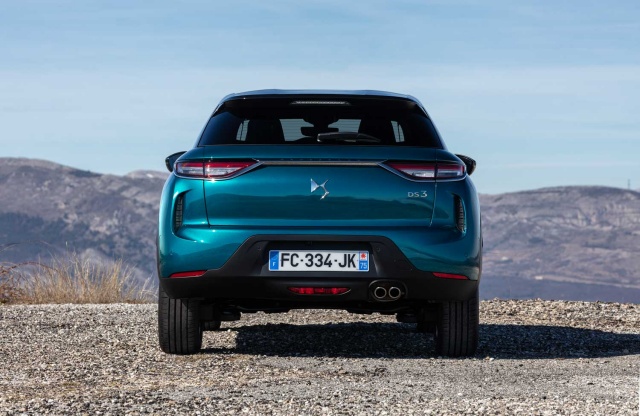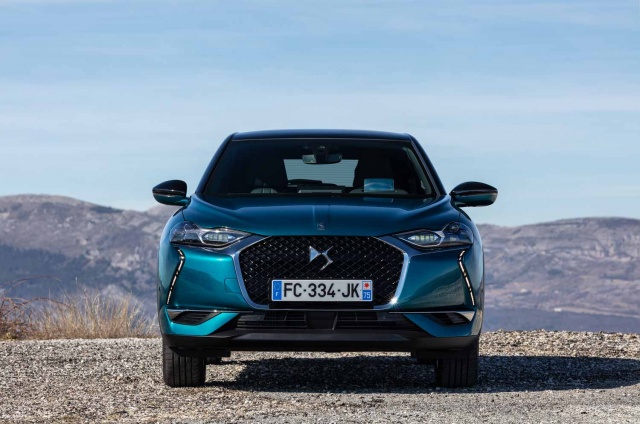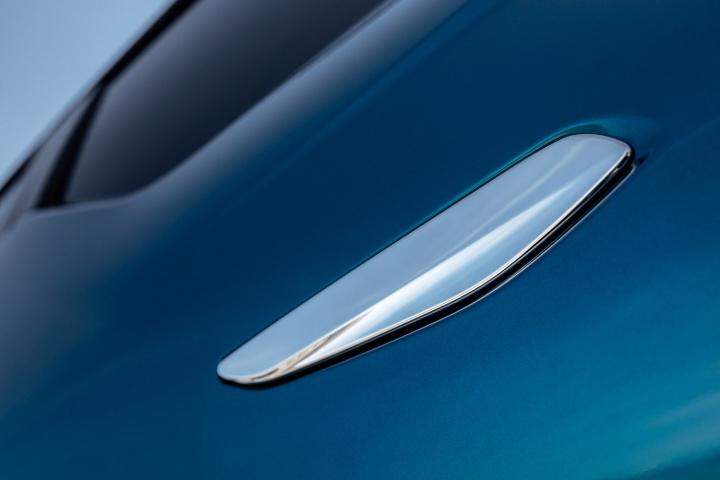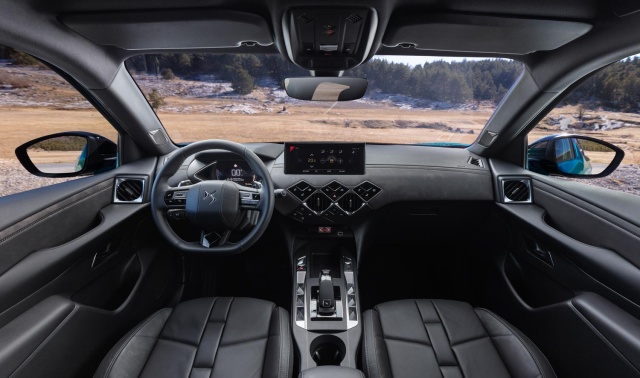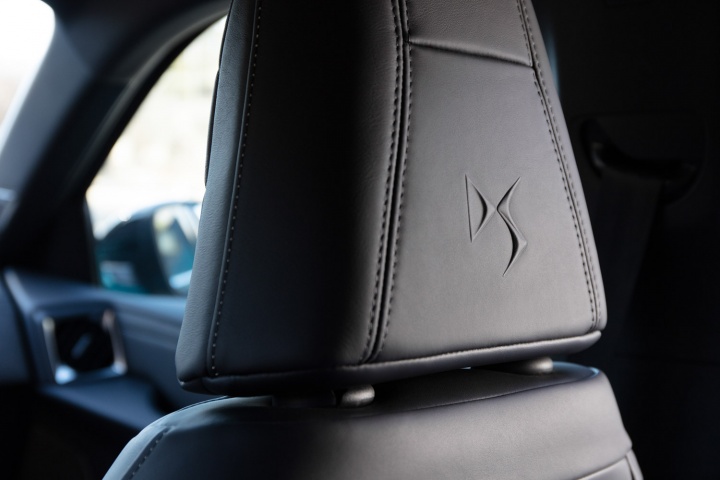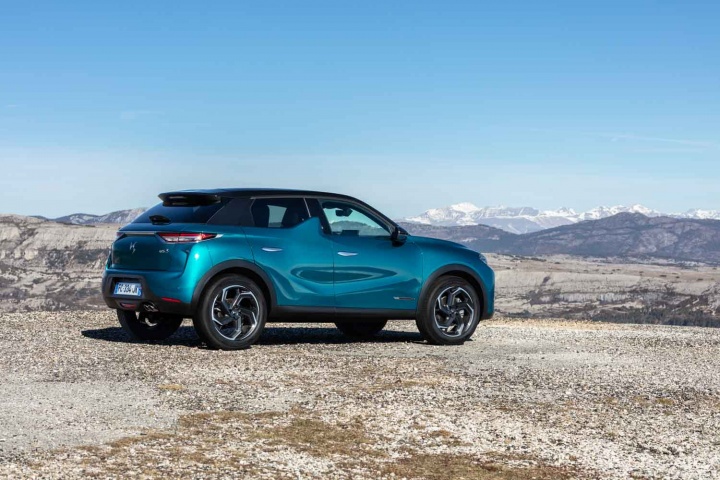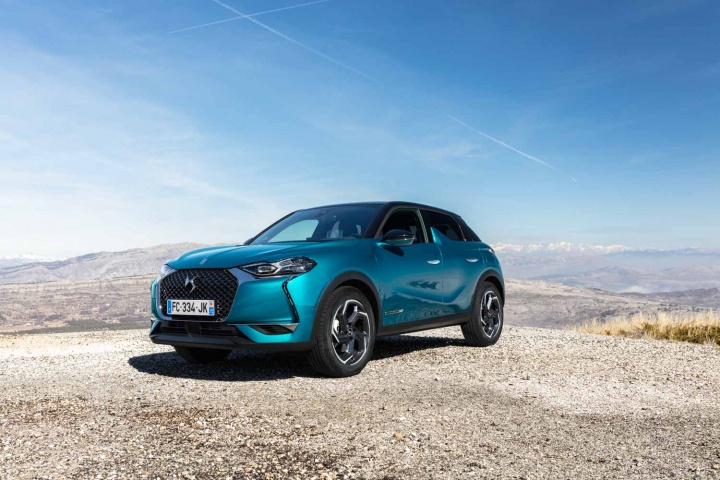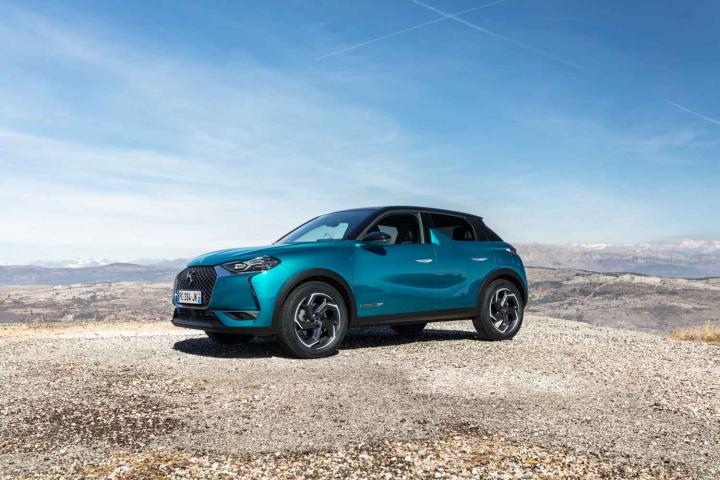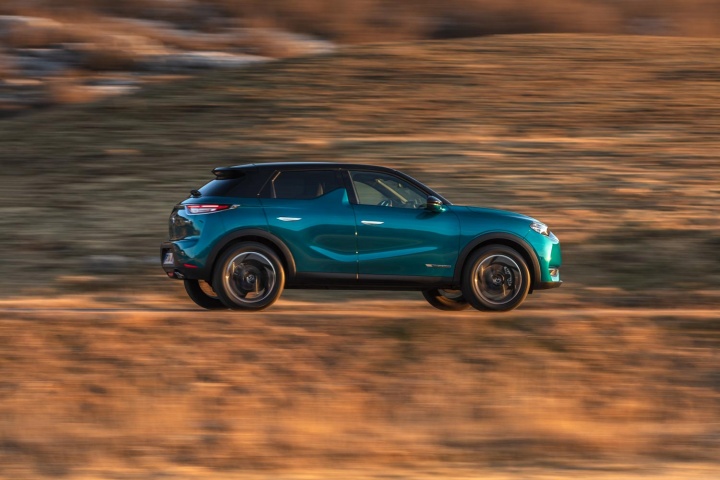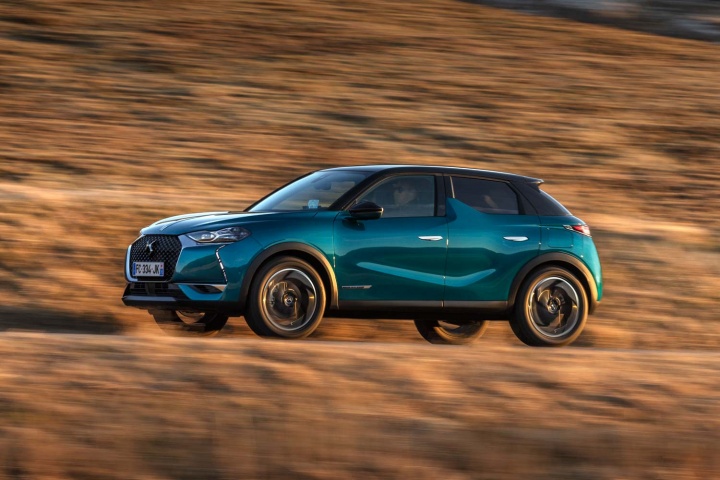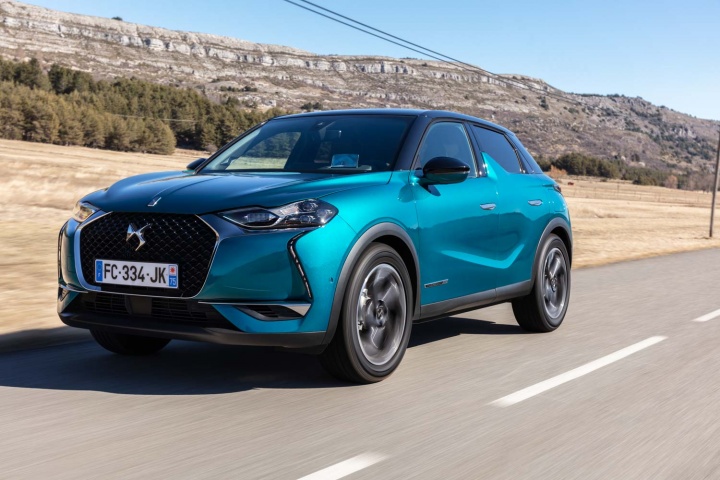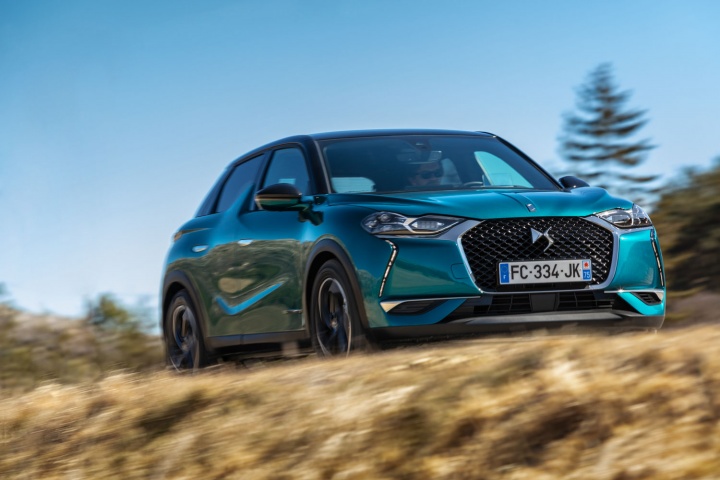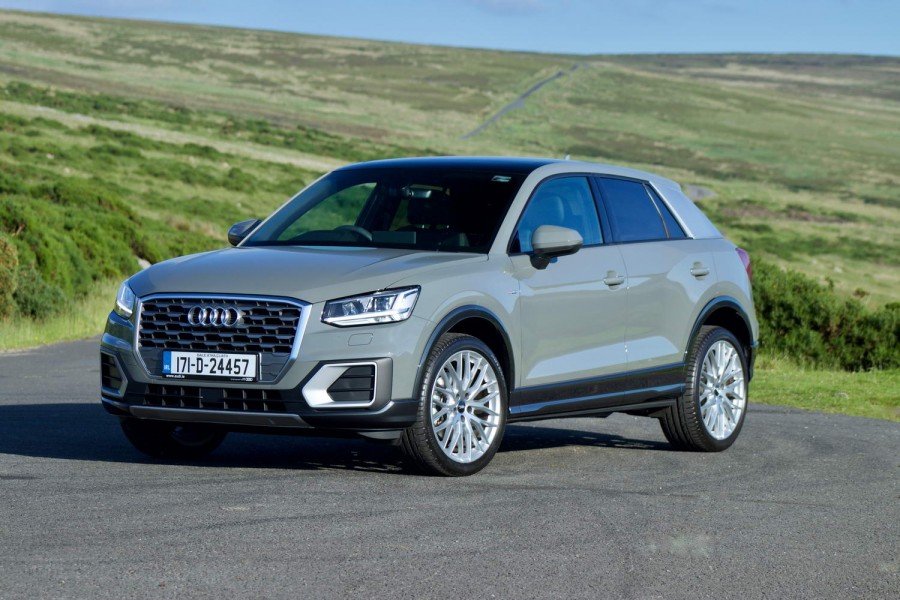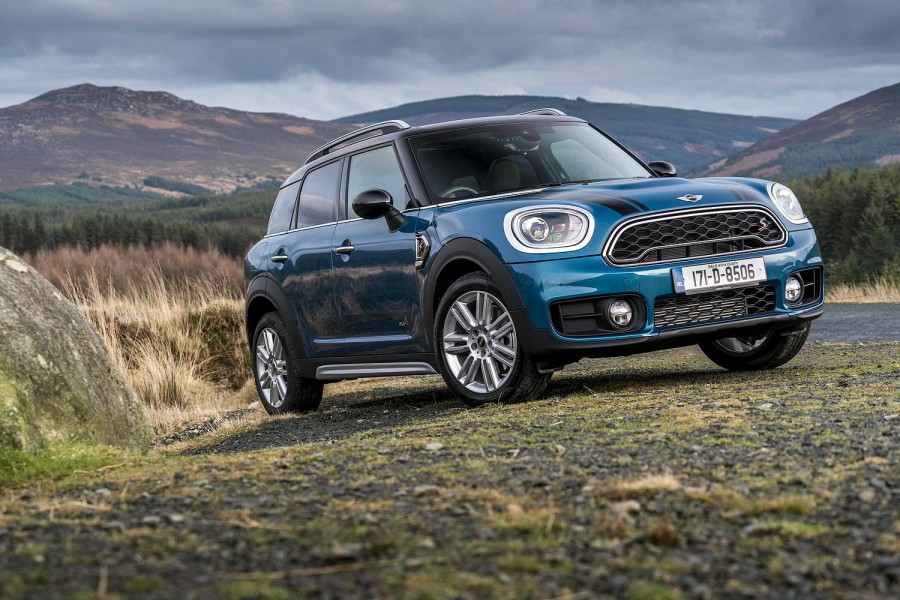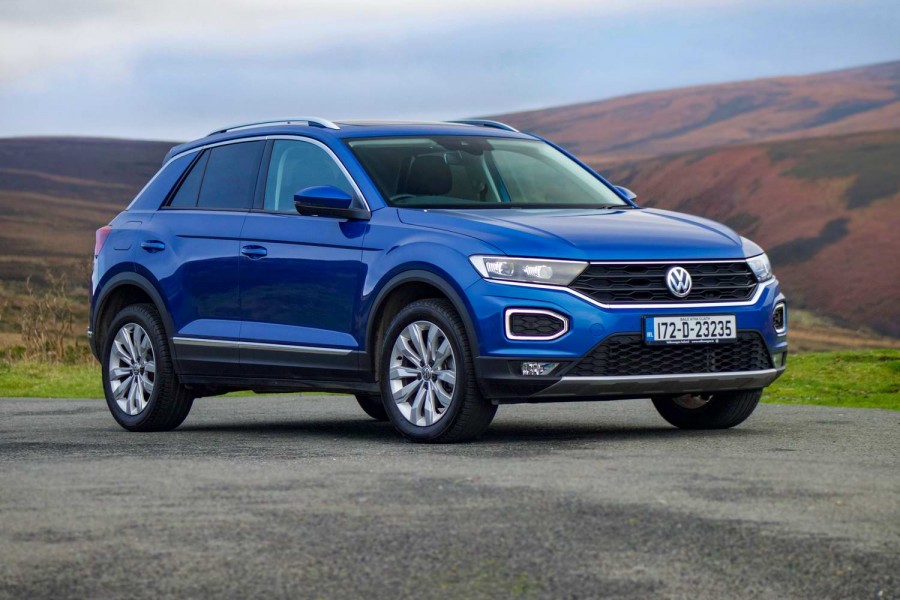There's no shortage of compact SUVs these days, but the DS 3 Crossback serves up more style than most. Following on from the larger DS 7 Crossback, this compact five-seater has the like of Audi's Q2 and the MINI Countryman in its sights.
In the metal
When so much of the competition is churning out angular styling, sharp lines and bodywork creases, the DS 3 Crossback offers curves and premium touches like door handles that retract to sit flush with the bodywork when locked. Those who remember the DS 3 hatchback will recognise the distinctive rear door design that rises around the B-pillar, but that's where the similarity between the two ends.
The large front grille of the new DS 3 includes a surround that moves outwards to the distinctive headlights. On higher-spec models, these will use the company's Matrix LED Vision. Like similar systems from other car makers, these automatically activate high-beam lights in dark areas, dynamically illuminating the road ahead without dazzling other road users. These can be useful if you live in less well-lit rural areas.
Sitting into the DS 3 for the first time you can't help but be taken aback by the somewhat unique design of the cabin - and the centre console in particular. DS makes a big thing about diamonds; even the company's logo is in the shape of one. That continues to the interior where, rather than having a conventional centre stack, many of the controls are grouped into touch-sensitive diamond panels, including the air vents (with two more, unusually, on the inside of the door). These are set against a choice of materials on the dash including Alcantara and Nappa leather. We didn't find the controls very intuitive to use, something that also went for the rest of the switchgear located on either side of the gear selector, but this probably won't be an issue for owners over time.
The seats get a high-quality foam that is claimed to offer better support on longer journeys. We didn't find them especially beneficial over other seats, but they were comfortable and reasonably supportive. They are available with electric adjustment and heating.
Higher-spec models will also feature a 10.3-inch touchscreen infotainment system, with the standard item being a seven-inch unit. All DS 3s get a digital instrument display, though it isn't that large, and higher-spec versions feature a head-up display that's clear and easy to read.
Rear passenger space is adequate, but the high door line won't help little ones that may be prone to travel sickness. It's not as claustrophobic in the back as a Toyota C-HR, but with three passengers in the rear it will feel 'cosy'. There are two rear ISOFIX points and one in the front passenger seat.
At the back of the car, the PureTech 130 variant tested here gets a single twin-exit exhaust on one side of the bumper. The more powerful PureTech 155 is differentiated by two separate exhaust exits neatly integrated into the rear bumper.
As for boot space, the DS 3 Crossback lags well behind its main rivals for overall volume at 350 litres. That space isn't helped by a tall lip and rear seats that don't fold entirely flat. With those down the cargo capacity increases to 1,050 litres, which is the same as the Audi Q2, but some 300 litres behind the MINI Countryman. Unlike some other premium offerings in the segment, there isn't an electric tailgate option.
Driving it
While the DS 3 Crossback falls into the compact SUV class, it is very much a car for the road. The new platform that it is built on doesn't support all-wheel drive, but it's clear from the styling (except for the raised ride height and some token plastic cladding along the sills and around the wheelarches) that this car is for urban living rather than tackling muddy trails.
Thankfully the engineers didn't give it overly stiff suspension in an attempt to make it feel dynamic or sporty. The DS 3 Crossback strikes a decent balance between comfort and drivability. There is a bit of body lean in faster bends, but it always feels composed and surefooted. Bump absorption is good for the most part, though over poorer sections of tarmac the suspension can feel busy.
The steering is relatively quick and zipping around city streets it's fun to drive. A useful 10.3-metre turning circle and three turns of the wheel from lock-to-lock make it perfect for city drivers, especially in car parks. Engine performance isn't lacking either, considering the car's size and it being a three-cylinder petrol unit. A choice of three driving modes is available, and these deliver the expected variances with Eco dumbing down the throttle response to a level that only makes sense if you're keen on reducing fuel consumption as much as possible. At the other end of the spectrum the Sport mode hangs onto gears for longer, but during more enthusiastic driving you'll want to take over control of the gear shifts via the paddles. Just leaving it in the default Normal mode returns the best experience.
The 130hp PureTech petrol engine suits the DS 3 Crossback in urban scenarios and it is well up to the task of motorway driving. At higher speeds, the cabin remains pretty quiet, too. Only during engine stop-start does it lack some refinement, with the engine tending to shudder on and off when you're just holding the car still on the brake pedal. DS doesn't offer a manual gearbox with this engine, sticking instead with the eight-speed automatic. It shifts through gears smoothly, keeping within the engine's optimum powerband for most of the time. Should you want to take over control, the small shift paddles on the steering column are nice to use and relatively responsive.
A more powerful version of the same engine is also available, badged as PureTech 155 (again only with an automatic transmission), along with a 1.5-litre BlueHDi 100hp diesel that is offered with either an automatic or manual gearbox. Later in 2019, DS Automobiles will also introduce a fully electric version called the E-Tense, a name that will be used for all electrified DS models.
What you get for your money
Both pricing and final specifications for the DS 3 Crossback are in the process of being finalised for the Irish market, so we can't yet rate it from a value for money standpoint. When these details are confirmed, we will update this section of the review.
What DS Automobiles Ireland has said is that it is aiming for the car to be priced competitively in line with its nearest rivals, which should see it starting at just under €30,000. We expect that there will be at least three trim levels to choose from when it arrives in the middle of 2019. Currently, there is just one dealer for DS Automobiles in Ireland, based in Dublin, but the brand is actively working to increase coverage.
Summary
If you're in the market for a small SUV that's a little different then the DS 3 Crossback may well appeal. It isn't the most spacious or most practical car in the segment, but instead, the DS 3 Crossback delivers what many buyers want, a comfortable and stylish car in the small SUV shape. With the right colour and spec choice it certainly can stand out in a car park full of grey and silver cars.

